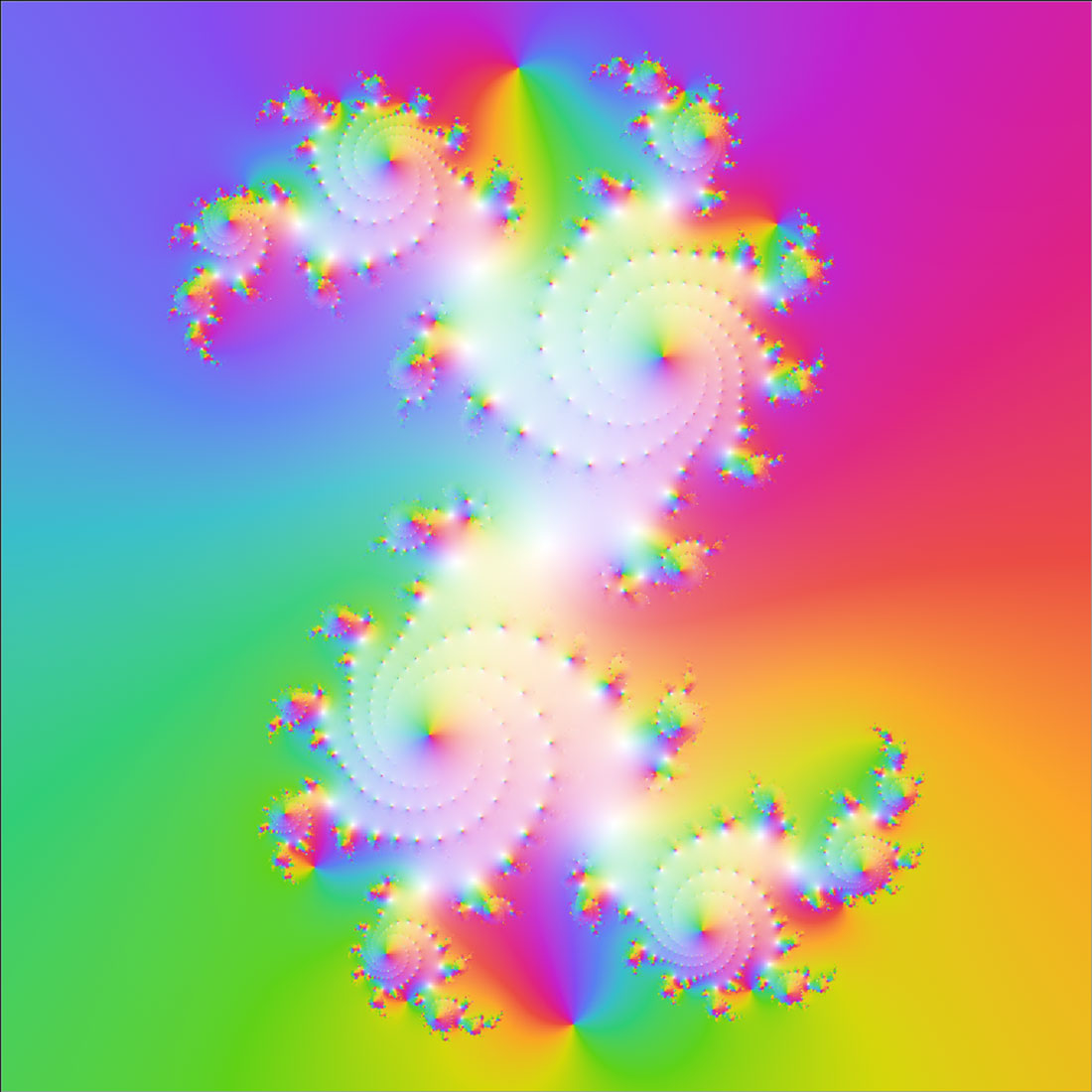Honorable Mention: Julia Flow 1
Photography by Michael Ostroff, graduate student,
Charles E. Schmidt College of Science
C=0.38+0.2I: If you take the Julia fractal for a given c and vary c by a little, you can see parts of the fractal move around. I wanted to quantify this apparent velocity field and found it was described by an Engel sum of 2z_n. More precisely (dz/dc)= (1/2z₀)(1+(1/2z₁)(1+(1/2z₂)(1+(1/2z₃)(1+(1/2z₄)(1+…))))) is the rate that z₀ has to change in order for z_∞ to remain constant as c changes. I refer to this phenomenon as Julia flow. Interestingly enough, it seems to be an infinite product of terms like (z-a)/(z-b). Typically, complex functions involve a summation of poles, however, this function has many points where the function goes to 0. An example is at point -0.06287405292473552+1.0966065863295078i for c=0.38+0.2i the Julia flow goes to 0.


